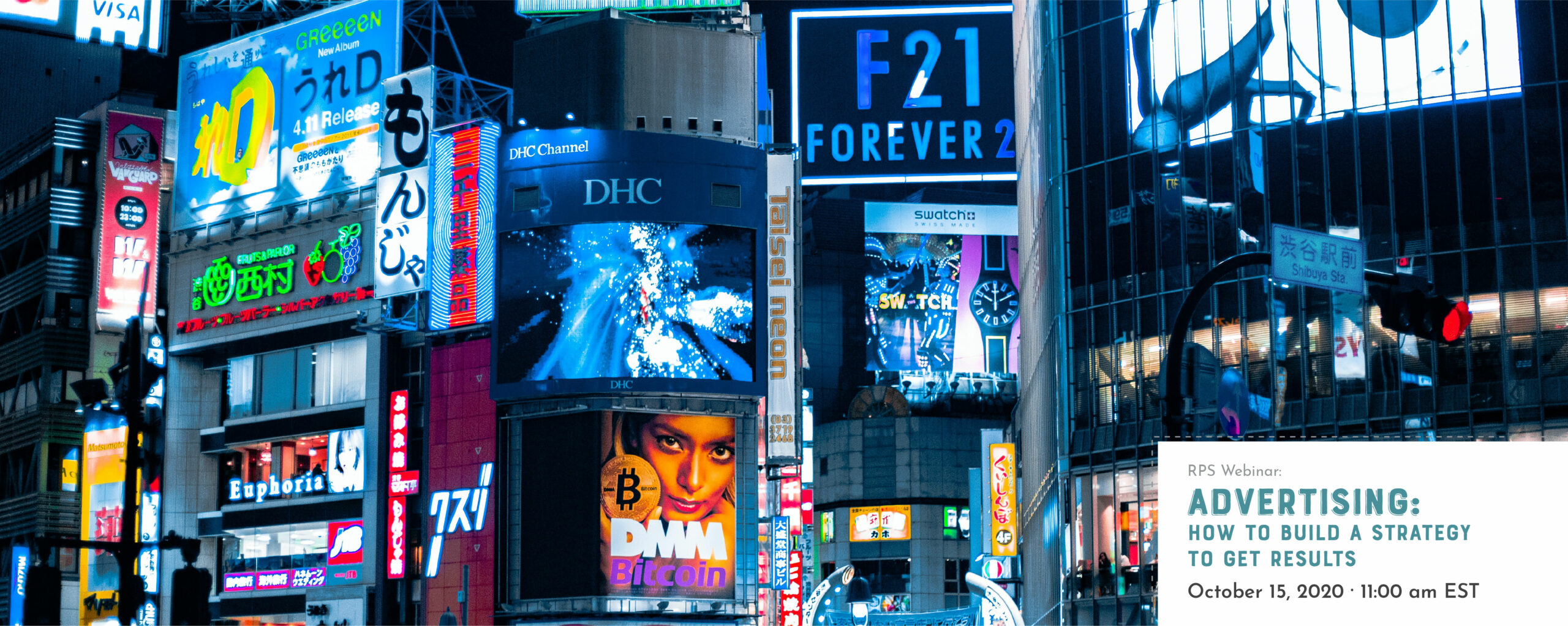Be sure to check out our ad strategy worksheet, available for download at the bottom of this post.
Advertising may seem like it’s nothing more than eye-catching graphics and snappy slogans or taglines, but the truth is that’s just a small part of advertising. Advertising is a lot like an iceberg–you see what’s above the surface but there is much more you don’t see that must be in place in order to create an advertising strategy that gets results.
What is advertising?
Before we start diving in too deep, let’s take a step back and look at how advertising fits into the bigger picture of marketing. Advertising is an element of marketing that focuses on communicating visually, orally, or through written word with a consumer about a specific product. As HubSpot once stated, “It’s a strategic effort, usually paid for, to spread awareness of a product or service as a part of the more holistic goals outlined.” In other words, advertising is one part of your marketing plan. It focuses on clearly communicating your message about a brand or product.
Allan Dibb, author of The 1-Page Marketing Plan, offers a great explanation of what marketing is and how advertising fits into the picture. Check out the webinar recording below to see the example!
Does advertising even work?
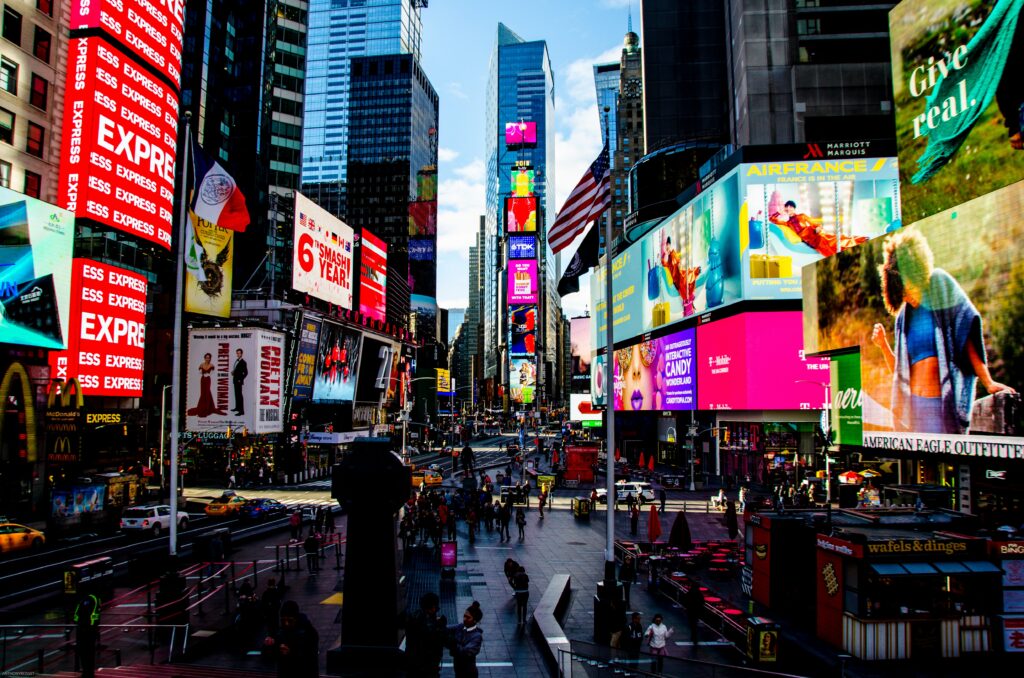
We see between 4,000 – 10,000 ads a day, with that level of overwhelm, you may be wondering how it’s even possible that ads are still working in favor of businesses.
We’re here to tell you it is! Advertisers and marketers have had to grow and refocus. It doesn’t look like it used to. Now, advertising is not just about product placement, tv ads, and telling people to buy your product. There’s more that has to go into the process and it’s ever-changing!
There are a lot more choices than ever before so we’ll talk today about how to make decisions that will benefit your brand and how to determine if your advertising channels are providing you a return on your investment.
Advertising collectively works. Without it, you wouldn’t learn as much about new products, or services.
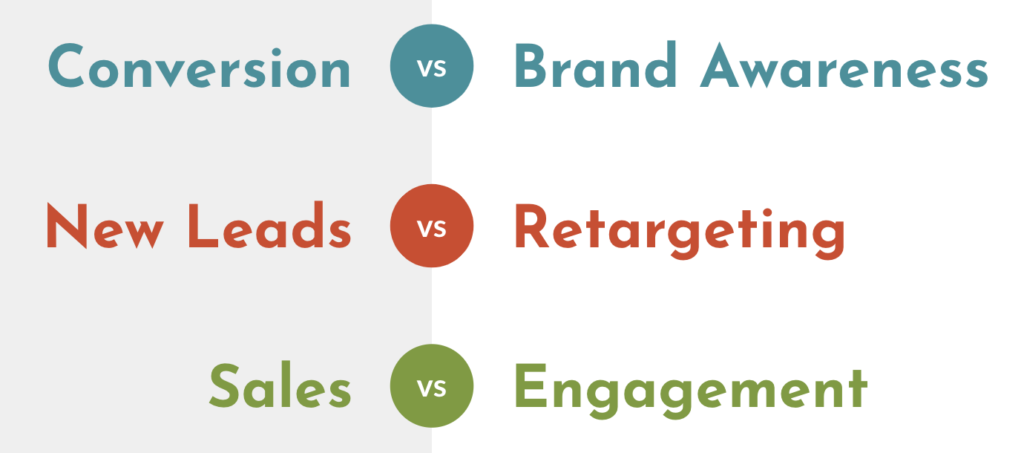
However, it’s not a one size fits all solution. Advertising works if you work it– meaning different advertising methods are going to be chosen by different businesses. It also depends on what your goal is. Is it conversions, or brand awareness? If you’re able to work through the strategy behind the advertising and have a good understanding of your business and your goals, you’ll be able to make educated decisions about whether or not your ads are likely to work.
Your Guide – The Sales Funnel
Before diving too deep into the details of ads, it’s important to remember your trust guide–the sales funnel. This tool helps us understand the journey customers go through when they are making a decision. Check out our webinar and blog from earlier this year to learn more about the sales funnel.
Ads Are Like Icebergs
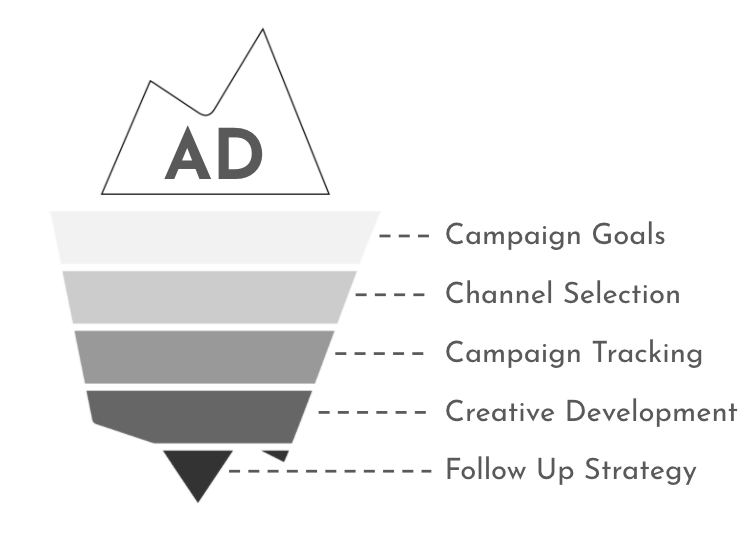
As we alluded to earlier, ads are a lot like icebergs. As a user, you’re only seeing the top section– the visual ad itself.
What you don’t see is all the channel selection strategy, tracking, creative development, campaign structure and follow up strategy that makes the ad function as it should. There is a lot of both pre and post planning that comes into play when it comes to advertising. Don Draper makes it look easy, but there was a lot more going on in his head while he was drinking cocktails and laying on his sofa.

Traditional vs. Digital
To simplify the ever-changing and complex makeup of advertising, we are going group ads into two categories, traditional and digital.

Traditional = Television, Printed Magazines, Billboards, and Radio.
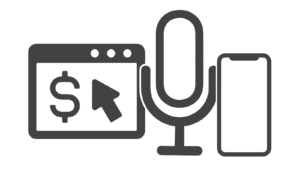
Digital = Social Media Ads, Podcast Advertising, and Pay Per Click, to name a few.
They both still have their place in the advertising space, and businesses can often benefit from utilizing channels from both areas.
The reason we say we are going to simplify is that we are now getting ad options that can do both (for example, many newspapers will do both print and digital insertions), as well as traditional that is transitioning into digital (such as ads on streaming platforms, like Hulu or Netflix or digital radio like Pandora).
This can become very complex, so we’re focusing in on digital ad types. Specifically, we’re going to focus in on three of the most popular digital ad types to talk through why you would consider them and how you know they are working to help show you the strategy of how you pick which type or ad, and then once you have picked you advertising mix, the strategy of converting your audience.
Strategy: How to Pick
As we said earlier, the sales funnel is your ultimate guide when selecting channels. You want to make sure you have a good mix of stages, so you’re nurturing your leads intentionally throughout the decision making process to ultimately select you. Each advertising channel finds itself in a section of the sales funnel. The key is to understand how each channel supports your customer. This is what makes deciding which channel MUCH easier.
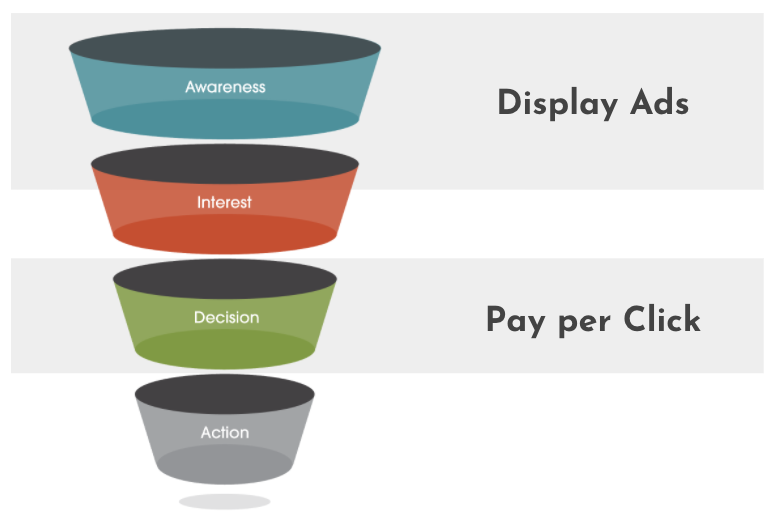
There are a few that can hit the sweet spot between two levels. We have a resource available that outlines what stage each channel falls within.
Display ads can cover two, mainly if your display ads are retargeting but we am not going to go down that path, where as Pay per Click is when your audience is ready to decide, ie. buy! (See, we told you this can get complex very quickly.)
Display Ads: Social Media Ads
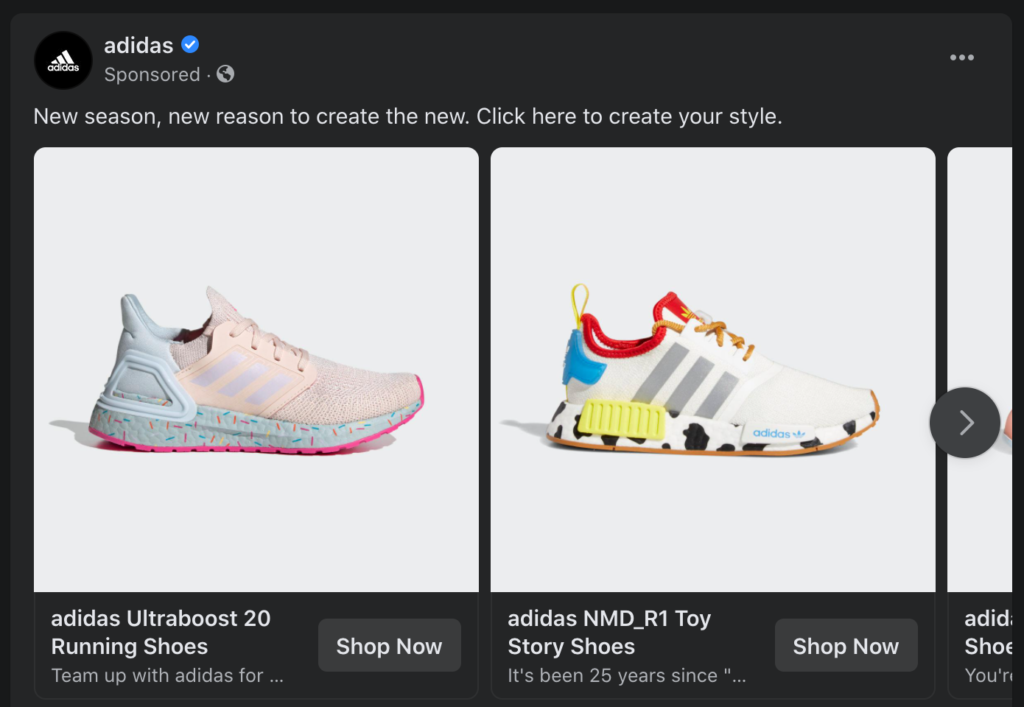
Social media ads are digital advertisements served to users on social media platforms such as Facebook, Twitter, Instagram, and LinkedIn. Social networks utilize user information to serve highly relevant advertisements based on interactions within a specific platform. Once ads are clicked, they drive traffic to landing pages to learn more information or act on purchasing a product.
Think about it: Whether you’ve been conscious of it or not, you’ve likely given Facebook and Instagram a lot of information about yourself and how you move throughout the internet. There are also a number of algorithms the can cross compare friends that you interact with and their interests.
Social Media Ads: Pros & Cons
Pros
- Specific targeting for ads
- Traffic on social media has increased during COVID
Cons
- Can be expensive since it’s another business’ platform
When to Use Social Media Ads
Brand awareness is the first step in the sales funnel, and ads on Facebook and Instagram can be targeted based on that demographic information, geographic location, as well as interactions with specific pages over time. The goal of social media advertising is to increase overall awareness of your product and services by promoting your business’ brand. Establish a relationship with social media users to later drive traffic to your business’ website to learn more about you.
What Success Looks Like
- Raising brand awareness, so you’re looking at Impressions and CPM, Cost per 1000 Impressions
- Nurturing and engagement
Geofencing
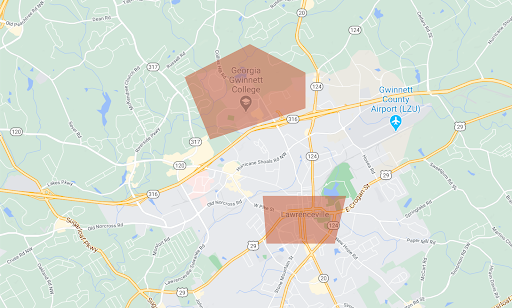
Geofencing is a way of delivering ads based on a specific geographic location.
Geofencing: Pros & Cons
Pros
- Specific locations
Cons
- Limitations with what areas you can geofence
When to Use Geofencing
Like social media ads, geofencing is used for raising brand awareness.
What Success Looks Like
- Raising brand awareness, so you’re looking at Impressions and CPM, Cost per 1000 Impressions
- As you’re typically targeting a specific location, you’ll want to track leads that make it into your store or via the website
Pay per Click
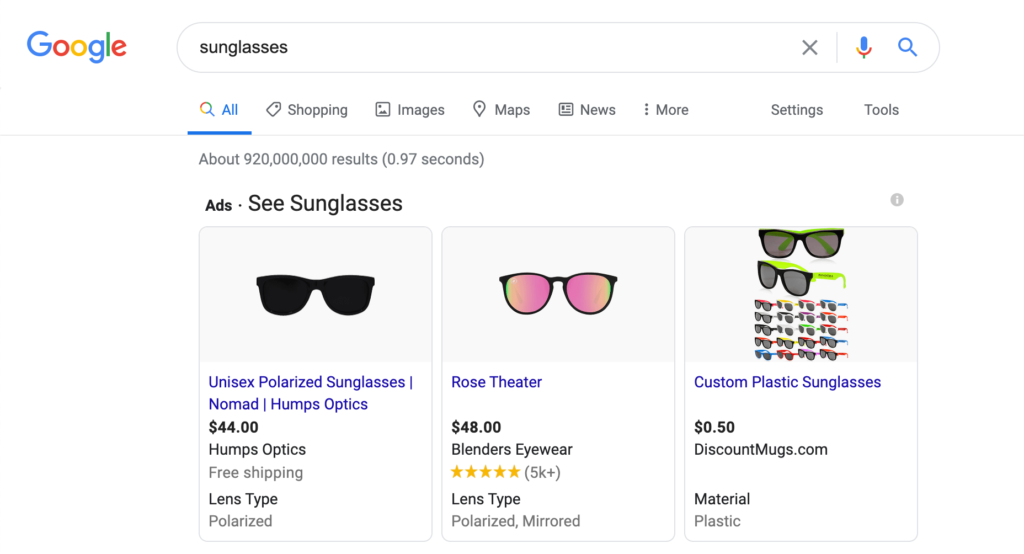
Pay-per-Click (PPC) is an online advertising model in which advertisers pay each time a user clicks on one of their online ads. Essentially, it’s a way of buying visits to your site, rather than attempting to “earn” those visits organically. You can find pay-per-click ads following a search at the top of the search results page before organic search results. Sometimes there are additional search results after the organic search results.
Pay per Click: Pros & Cons
Pros
- Lower cost to maintain
- Lower stage tactic that is highly trackable
- Can drive traffic to your website and actually boost your overall website quality score and organic search results
Cons
- Cost in certain industries
- It’s not visual, so if 60% of people are visual learners, we are not connecting with most people in a way that works for them
When to Use Pay per Click
PPC is a great strategy if you’re focused on trying to meet your customer’s immediate needs. Pay Per Click is a lower funnel stage tactic, meaning that customers are Ready to Purchase and are either comparing you to your competition or are looking to immediately fulfill that need.
What Success Looks Like
Success is evaluated based on the Conversion Rates and Total Leads. This is about how well you’re fulfilling and converting your prospects into customers.
When PPC is working correctly, the fee is trivial, because the visit is worth more than what you pay for it. In other words, if you pay $3 for a click, but the click results in a $300 sale, then you’ve had a nice return on your investment.
The Customer Experience
The full process for your leads should be clear and consistent. We emphasize this because pitfalls are easy.
Think about it this way: You see an ad on Facebook for a pair of shoes you really like, so you click on it expecting to be taken to the product page for that particular shoe. Instead, you’re taken to the homepage of the retailer’s website and frustrated because now you have to work to find that shoe before you can buy it. Can you imagine how many more sales the retailer would have if they had linked the ad directly to that pair of shoes?
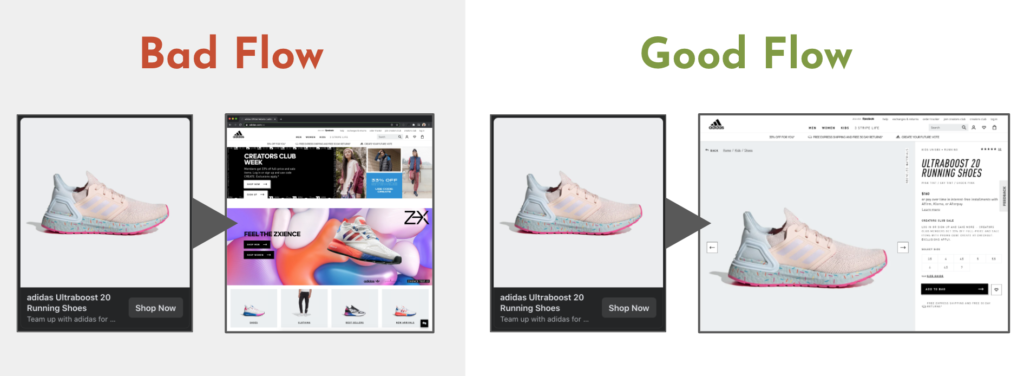
That being stated, make sure that part of your planning, and especially your ad testing, includes experiencing your ad as your customer. Creative needs to match from one stage to the next. The same goes for messaging.
It’s important to follow through to your landing page as well. Make sure you are following best practices by giving your customers a clear place to direct their attention and an easy way to complete the intended conversion.
How to Know Your Ads are Working
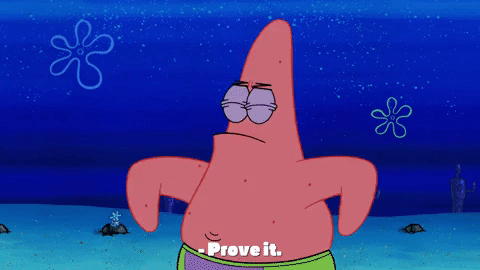
Whether you’re a team of one or having to prove that what you’re investing your resources into is working, you should be looking at your reporting regularly. This means you have to know your business!
Consider this: If you’re a local retail store running a Facebook ad selling masks, you’re going to want to pull average statistics for other retail or apparel businesses. Your goals for your Facebook campaign are going to be totally different from a campaign advertising a larger purchase like a cruise.
Make Sure the Money Makes Sense

Running ads on a channel has to make sense. You have to get your money’s worth and make sure you’re seeing long term success. If the money doesn’t move in your favor, turn it off.
Be Willing to Try
You have to be willing to try new things and fail fast. Know what you need to achieve and give it enough time to get the data you need to make a decision for your long-term strategy. We usually recommend starting off with a three-month run in order to make the adjustments that will let you see if this is worth your time and budget in the long-run. Try a couple of options and see what works better so you know what to do and what not to do. Keep your eyes on the numbers so you can pivot quickly as things change.
Moving Forward
Now that you have a better understanding of the different types of digital ads and the strategy behind choosing what types of ads to run, it’s time to look at your ad strategy and how you might need to adjust in order to get the best return on your investment. If you’d like some support to get started, we are here to help! Fill out the form on our contact page to request a marketing consultation.
Ready to start working on your next ad campaign or start building your advertising strategy? Fill out the form below to download our ad strategy worksheet!

